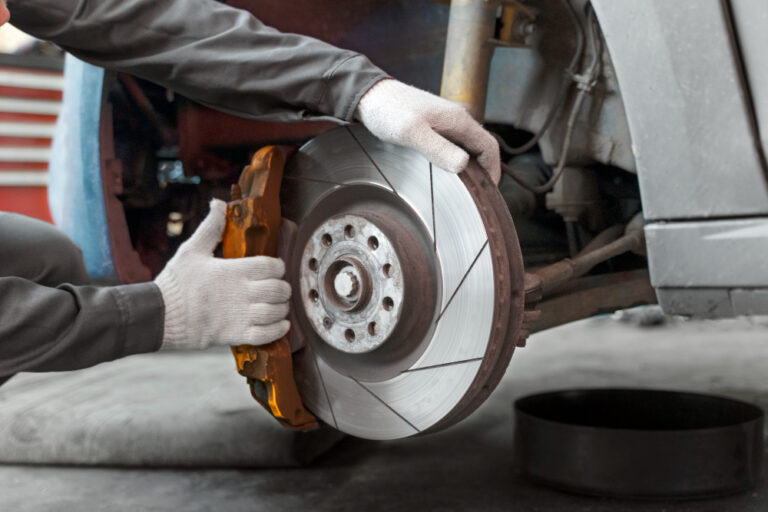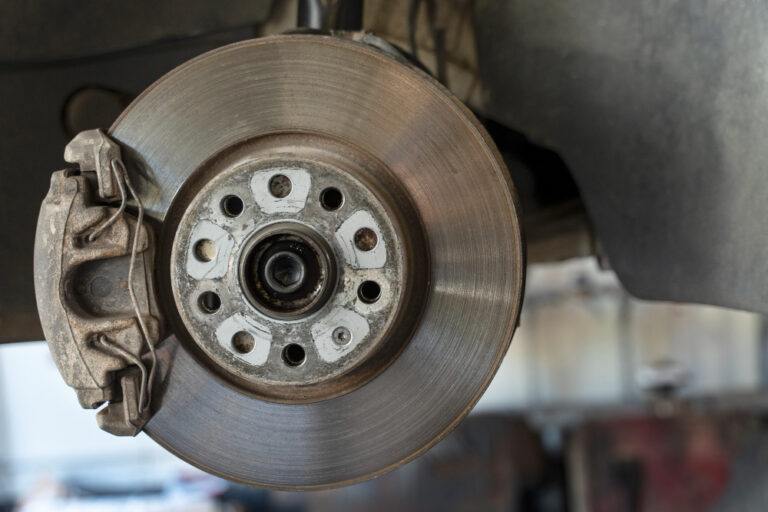Issues with brake fluid can have serious implications for a vehicle’s braking performance and overall safety. Brake fluid is responsible for transferring the force from your brake pedal to the brakes themselves, making it essential for responsive and effective braking. When brake fluid is low, contaminated, or leaking, it can lead to spongy brakes, delayed stopping, and even brake failure. Here’s an overview of common brake fluid problems, their symptoms, causes, and solutions.
Common Issues with Brake Fluid
- Low Brake Fluid Level
Low brake fluid is one of the most common brake-related issues. As brake pads wear down, more fluid is needed to maintain pressure in the braking system, which can gradually reduce fluid levels. Leaks in the system can also lead to a low brake fluid level. - Contaminated Brake Fluid
Over time, brake fluid can absorb moisture from the air, which can lead to contamination. Moisture in the brake fluid can reduce its boiling point, causing the fluid to vaporize under hard braking. Contaminated fluid may also appear darker or cloudy. - Leaking Brake Fluid
Brake fluid leaks can occur from damaged brake lines, seals, or master cylinder. A leaking system loses the pressure needed for effective braking, which can lead to a soft brake pedal or, in severe cases, brake failure. - Air in the Brake Lines
If air gets into the brake lines, it can cause a spongy or unresponsive brake pedal. Air doesn’t transmit force as effectively as fluid, so any trapped air bubbles reduce braking efficiency and responsiveness. - Old or Degraded Brake Fluid
Brake fluid has a limited lifespan and can degrade over time due to heat and moisture exposure. Degraded fluid loses its effectiveness, leading to poor braking performance.
Signs of Brake Fluid Problems
- Soft or Spongy Brake Pedal
A spongy brake pedal is a common symptom of low brake fluid, air in the brake lines, or moisture in the fluid. If the brake pedal feels soft or takes longer to engage, there may be an issue with the fluid. - Brake Warning Light
Many vehicles have a brake warning light that illuminates when there’s a problem with the brake fluid level or pressure. This light can indicate a serious issue and should be checked immediately. - Delayed or Reduced Braking Power
If it takes longer to stop or you notice a delay when pressing the brake pedal, it could be due to low or degraded brake fluid. This is particularly dangerous in emergency braking situations. - Visible Fluid Leak
If you notice a puddle of clear, oily fluid under your vehicle near the wheels or brake pedal, it could be a brake fluid leak. Brake fluid is usually clear to yellowish in color and has a slightly oily texture. - Unusual Noises While Braking
Squealing or grinding noises during braking can sometimes be due to contaminated or old brake fluid. However, these sounds can also be from worn brake pads, so it’s important to have the brakes inspected.
Causes of Brake Fluid Issues
- Wear and Tear: Brake components, such as hoses, seals, and the master cylinder, can degrade over time, leading to leaks or contamination.
- Heat and Moisture Exposure: Brake fluid can absorb moisture, especially in humid conditions, which lowers its boiling point and can lead to vaporization during braking.
- Lack of Maintenance: Failing to replace brake fluid at regular intervals can lead to degradation and contamination, reducing braking performance.
Solutions for Brake Fluid Problems
- Top Off or Refill Brake Fluid
If the brake fluid level is low but no leaks are present, topping off the fluid can restore proper braking function. Make sure to use the type of brake fluid specified in your vehicle’s manual. - Flush and Replace Brake Fluid
Flushing the brake fluid involves removing old, degraded fluid and replacing it with fresh fluid. Most manufacturers recommend a brake fluid change every 2-3 years, or according to the service schedule. - Bleed the Brakes
If air is trapped in the brake lines, bleeding the brakes will remove the air, restoring full braking power. This process should be done after brake repairs or when replacing brake fluid. - Repair or Replace Damaged Components
If leaks are present, have a mechanic inspect and replace damaged components such as brake lines, hoses, seals, or the master cylinder. Addressing leaks promptly helps prevent further fluid loss and ensures safe braking. - Routine Inspections
Regular brake inspections can identify fluid issues early. Mechanics can test for moisture in the fluid, check for leaks, and assess overall fluid quality.
Preventing Brake Fluid Issues
- Follow Maintenance Schedules: Regularly replace brake fluid according to the manufacturer’s recommendations to maintain optimal performance.
- Inspect Brake Fluid Regularly: Check the brake fluid level and color monthly, especially in older vehicles, to catch early signs of leaks or contamination.
- Use the Right Brake Fluid: Different vehicles require specific types of brake fluid, so always use the type specified in your owner’s manual.
Brake fluid problems can impact safety, making it essential to stay vigilant and address issues promptly. By maintaining clean, sufficient brake fluid and following a regular maintenance schedule, you can ensure reliable and responsive braking for a safer driving experience.




